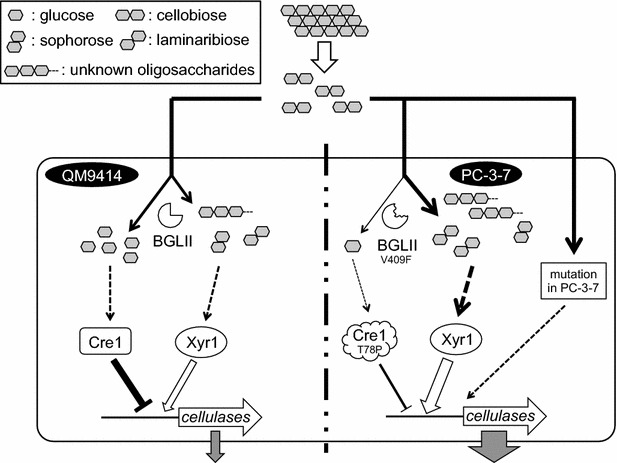Fig. 11.

The schematic representation of the model of enhanced cellulase production responsive to cellobiose in T. reesei PC-3-7. Extracellular cellobioses are hydrolyzed to glucoses or transglycosylated by extracellular or cell wall-associated BGLs. Glucose causes carbon catabolite repression (CCR) of cellulase expression. However, Cre1 controlling CCR has mutated, and therefore PC-3-7 is relieved from glucose repression. Alternatively, cellobioses are incorporated in the cell and may be accumulated in the cell because BGLII, the major intracellular BGL of T. reesei has mutated and therefore possesses significantly reduced hydrolyzing activity. The mutated BGLII still has some residual transglycosylation activity and could generate possible cellulase inducers from cellobiose. In addition, other factor(s) that is mutated in the PC-3-7 gene through strain development from QM9414 may affect the role of cellobiose in cellulase induction. The combination of these factors might be the cause for the high cellulase production of PC-3-7
